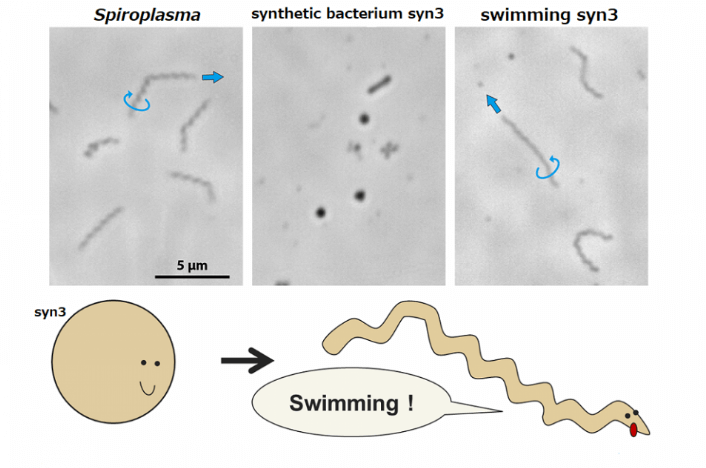In a groundbreaking study, Japanese researchers from Osaka Metropolitan University
For the experiment, scientistsused the synthetic bacterium syn-3. A completely artificial life form was created 12 years ago, when scientists created a microorganism from a synthetic chromosome, which consists of four chemicals. Then other researchers added the syn3 genome to the organism, which allowed it to grow and divide. However, he remained motionless.
In a new study, scientists introduced sevengenes that encode proteins and are “responsible” for the swimming functions of the Spiroplasma bacterium. It is a small natural organism in the shape of a long spiral. As a result, syn3 also changed its usual round shape and became similar to Spiroplasma. It was also able to swim using the “spiral direction reversal” technique, just like the original bacterium.
 Microscopic images of natural spiroplasma, synthetic syn3 bacteria, and mobile syn3
Microscopic images of natural spiroplasma, synthetic syn3 bacteria, and mobile syn3
Image Credit & Copyright: Makoto Miyata, Osaka Capital University
“Our floating syn3 can be called “the mosta small, mobile life form” capable of moving on its own, said Professor Makoto Miyata, co-author of the study. “The results of the study will help us better understand the evolution and origin of cell motility.”
Studying the world's smallest bacterium withthe smallest functional motor apparatus is useful for developing the movement of microrobots that mimic the work of cells, or motors based on proteins.
Read more:
The egg was dropped from space: look what happened to it
Brain-eating amoeba is spreading in the US: is there a danger to Russia
See what a woman Thora looks like. She lived 800 years ago
On the cover: Spiroplasma in Spiroplasma Phloem Cells